Volume 48 Number 3 (2017.9)
Special Feature
Design of High-power Lithium-ion Batteries with Long Operational Life
Special Feature
Overview
Research Reports
-
pages 1-15
Yoshinari Makimura, Tsuyoshi Sasaki and Takamasa Nonaka
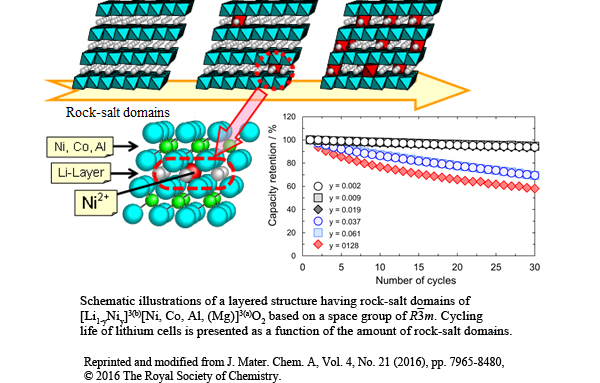
Crystal structures of lithium transition metal oxides are presented, and materials research on a positive electrode for lithium-ion batteries is highlighted in terms of solid solution, cation-doping, etc. Of these, factors affecting the cycling life of lithium-ion batteries of LiNi0.8Co0.15Al0.05O2 with graphite are discussed in terms of rechargeable capacity and polarization. -
pages 17-24
Nobuhiro Ogihara and Yuichi Itou
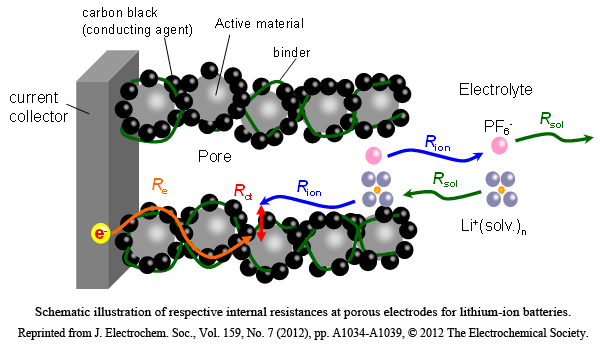
By combining transmission line model theory for cylindrical pores and electrochemical impedance spectroscopy using symmetric cells, we have succeeded in separating the internal resistances at a porous electrode into the electric resistance (Re), electrolyte bulk resistance (Rsol), ionic resistance in pores (Rion), and charge-transfer resistance for lithium intercalation (Rct).
-
pages 25-30
Yuichi Itou and Nobuhiro Ogihara
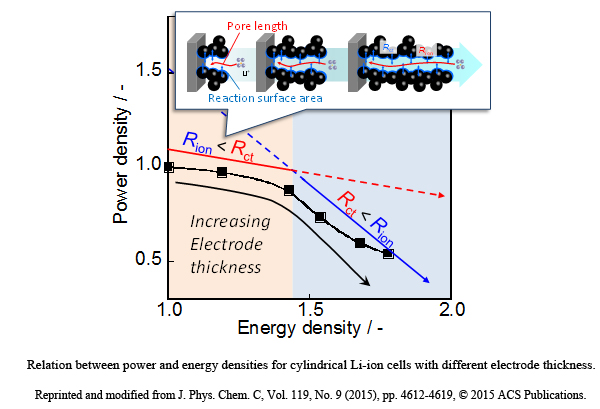
The dependence of the relationship between the internal resistance of porous electrodes and battery performance on the electrode thickness was investigated. The ionic resistance of the porous electrode Rion and charge transfer resistance Rct increase as the electrode thickness is increased, leading to a remarkable decrease in the specific power.
-
pages 31-37
Takamasa Nonaka, Yoshinari Makimura and Chikaaki Okuda
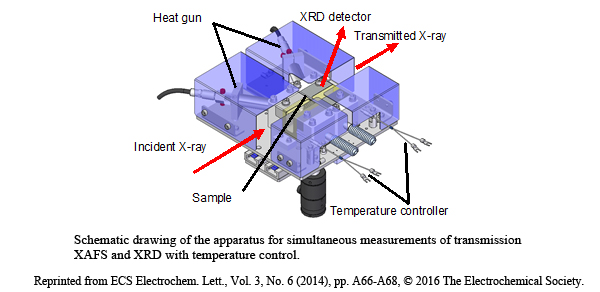
To investigate the thermal decomposition behavior of cathode materials for lithium-ion batteries, two instruments that enable XAFS and XRD measurements at high temperatures were developed. We applied these instruments to LiNi0.75Co0.15Al0.05Mg0.05O2 cathode material, and elucidated the chemical and structural changes that occurred during heating up to 450℃.
-
pages 39-51
Michael Hess, Tsuyoshi Sasaki, Claire Villevieille and Petr Novák
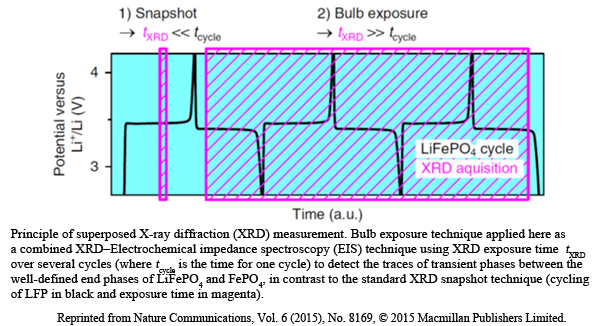
Here we report a novel technique combining high-resolution operando synchrotron X-ray diffraction coupled with electrochemical impedance spectroscopy to directly track non-equilibrium intermediate phases in lithium-ion battery materials. By using this technique, we experimentally found the formation of solid solution phases in LiFePO4; these phases enable the high-rate performance of LiFePO4.
-
7. Multiscale Simulations of a Li Diffusion in Lithium-ion Batteries
 (8293kB)
(8293kB)pages 53-66
Nobuko Ohba, Shunsuke Yamakawa and Ryoji Asahi
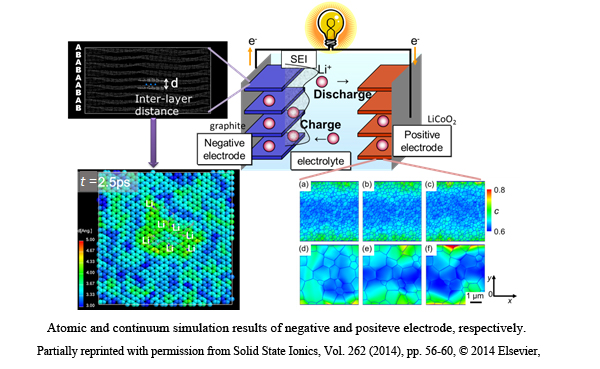
The diffusion of Lithium ions in electrodes, electrolytes, and at their interfaces is correlated with the charging/discharging speed of lithium-ion batteries. To reveal the dynamics of Lithium ions in the diffusion mechanism, atomic scale and continuum scale simulations for the respective negative and positive electrodes have been conducted.
